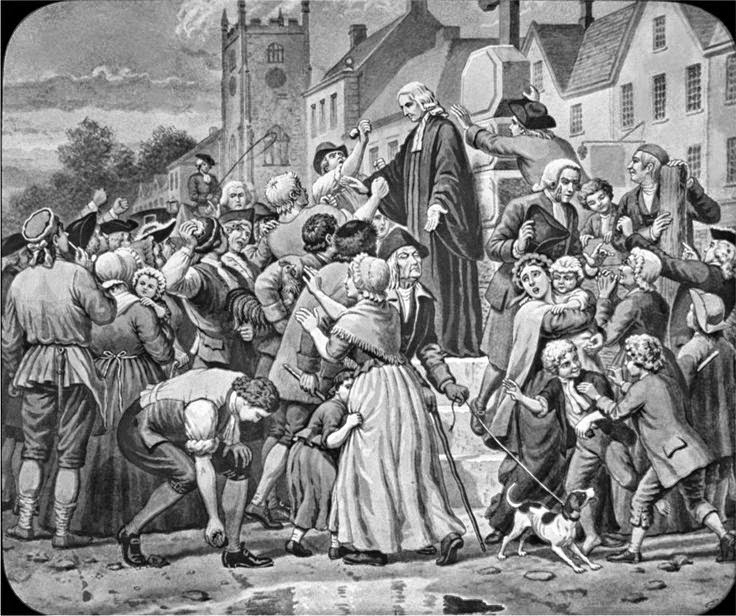Part 1 of this series about my ‘Holliday’ ancestral line provided an overview of Thomas Holliday, my 3 x great grandfather and Primitive Methodist preacher.
Part 2 gave a short overview of how Methodism started and developed under John Wesley, who died in 1791.
This third part now focuses on Thomas Holliday and concerns itself with his formative years up to approx.1820, his conversion to the faith and early attempts at preaching. In parallel we will review the on-going developments in Methodism as Thomas was growing up.
1797 – Thomas Holliday - His Early Years
It was into the previously described religious backdrop, 6 years post Wesley that my 3 x Great Grandfather, Thomas HOLLIDAY was born, Labour-in-Vain, Rufford, Nottinghamshire on 5 Sep 1797. I have searched for historical details of this area and found the following two snippets from 2001 :-
“The Labour-in-vain in Bilsthorpe was the name of a farm. The houses
pinpointed……adjacent to the A614, were originally farm workers
cottages. One of my ancestors (Stephen Broome) once lived and worked at that
farm (mid 19th century).The farm was still there at the end of the 19th
century but had disappeared in all but name by the mid 20th century. – (Dennis Farmery)”
AND:-
“Adding to that there are two (or were last time I went there) farms on the
stretch of Mickledale lane I know as Labour-in-vain. One is owned by a guy
called Strawson and is a big concern in the area. The other which is
possibly gone now (I think Strawsons bought it up) is/was owned by a guy
called Chris Storer. – (Craig Kerry)”
On further searching I discovered a row of cottages called ‘Labour-in-vain’ at this Google Maps/Streetview location.
Thanks to the careful preservation of historical documents and with special thanks to the Englesea Brook Chapel & Museum who have been extremely helpful, we can peruse these extracts from Thomas Holliday’s personal diary about his early years and family (apologies for the poor readability in parts).
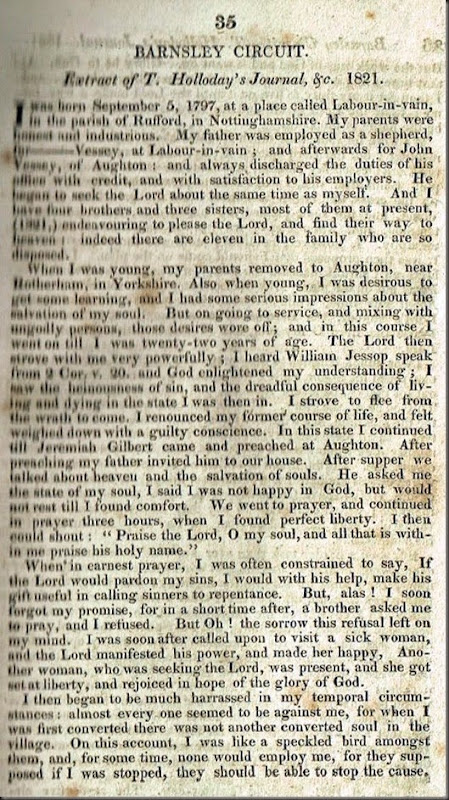
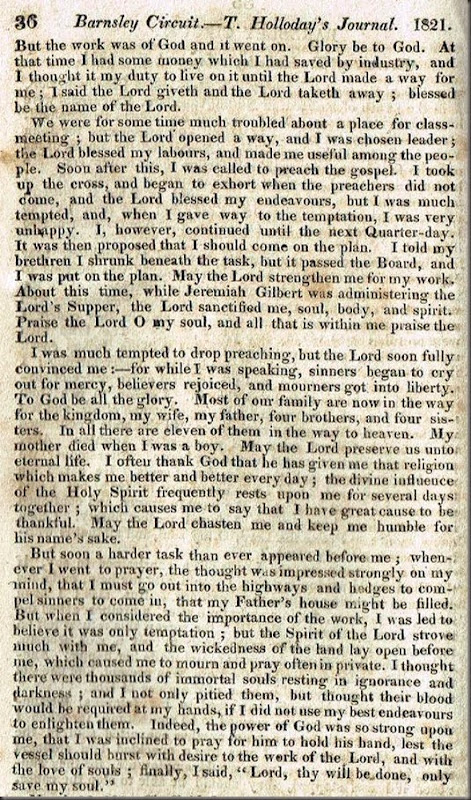
The above provides much needed insight and information about Thomas and his immediate family. For example, this tells us about their move to Aughton, near Rotherham when Thomas was young and also confirms his mother died when he was a boy. I can’t find a record of her death or burial as yet. Joseph, born 1802, is the last child of Mary and John Holliday that we currently have on record. She presumably died not long after leaving a large, grieving family who it seems all pulled together in their faith.
It is also interesting to note Thomas’ father worked for a John Vessey both in Rufford and in Aughton. He seems to have been an important landowner of the period…a name for further research!
Further, Thomas confirms he has 4 brothers and 4 sisters and mentions “…eleven of them in the way to heaven” at the time of writing (1821), although we only have 2 sisters confirmed at present (see family tree). Further research of other family members would be most welcome.
1799 - Hugh Bourne – ‘Father’ of Primitive Methodism
 To backtrack to 1799, two years following on from Thomas’ birth, the Methodist movement was in some turmoil and this was the year a young 27 year old English, north Staffordshire wheelwright, Hugh BOURNE, began on his path of gospel preaching. Hugh’s destiny would see him as a prime driver and ‘Father’ of the Primitive Methodist movement for the next 50 years.
To backtrack to 1799, two years following on from Thomas’ birth, the Methodist movement was in some turmoil and this was the year a young 27 year old English, north Staffordshire wheelwright, Hugh BOURNE, began on his path of gospel preaching. Hugh’s destiny would see him as a prime driver and ‘Father’ of the Primitive Methodist movement for the next 50 years.
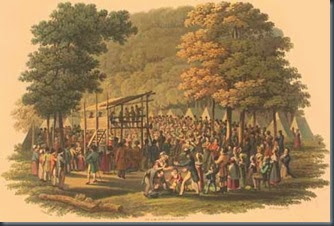 The start of the century saw an American religious revival sweeping the country. ‘Camp’ meetings were held lasting several days with preachers making highly charged, emotional expressions of faith. Some of these preachers were highly celebrated and perhaps one of the more famous ones was Lorenzo ‘Crazy’ Dow.
The start of the century saw an American religious revival sweeping the country. ‘Camp’ meetings were held lasting several days with preachers making highly charged, emotional expressions of faith. Some of these preachers were highly celebrated and perhaps one of the more famous ones was Lorenzo ‘Crazy’ Dow.
He also came to England to promote his style of religious fervour and in so doing met Hugh Bourne.
1807 – The First English ‘Camp’ Style Meeting at Mow Cop
 The seed of Camp meetings had been sown and grew in Bourne’s mind as a powerful technique and the first one held at Mow Cop in 1807. Although a low key, one day affair compared to the big American style meetings, it was sufficient to upset and was ‘the last straw’ for the established Wesleyan Methodists who by now were the main Methodist movement in England. They saw the leaders of these meetings and their followers as renegade religious ‘Zealots’ and sought to disentangle themselves by denouncing and forcibly expelling members sympathetic to that style. They even tried to prevent the meeting branding it as ‘highly improper for England’.
The seed of Camp meetings had been sown and grew in Bourne’s mind as a powerful technique and the first one held at Mow Cop in 1807. Although a low key, one day affair compared to the big American style meetings, it was sufficient to upset and was ‘the last straw’ for the established Wesleyan Methodists who by now were the main Methodist movement in England. They saw the leaders of these meetings and their followers as renegade religious ‘Zealots’ and sought to disentangle themselves by denouncing and forcibly expelling members sympathetic to that style. They even tried to prevent the meeting branding it as ‘highly improper for England’.
These rejected groups formed different Methodist denominations, Hugh Bourne a key leader amongst them. They all had in common the feeling that the Wesleyan Methodists were now too establishment and respectable, not representing the wider, working classes of society and they thus formed the ‘Primitive Methodist Connexion’ which would encourage the old fire of the early revivalist years and reach out into the community. They were also to be widely known by the terms ‘Camp Meeting Methodists’ and latterly as ‘Ranters’ because of their fervent preaching.
(see http://www.myprimitivemethodists.org.uk/page_id__993_path__0p4p39p.aspx )
1808 – William Clowes (1780-1851)
 At this point we must introduce William CLOWES, a potter by trade who had entered the Wesleyan Church as a new convert in 1805, after a rather colourful, mis-spent youth. He began preaching from 1808. He took up with Bourne and others to emerge as a founding member of the Primitive Methodists and a charismatic and successful preacher, especially in the north of England where his following were known as ‘Clowesites’. His journals are valuable social history material.
At this point we must introduce William CLOWES, a potter by trade who had entered the Wesleyan Church as a new convert in 1805, after a rather colourful, mis-spent youth. He began preaching from 1808. He took up with Bourne and others to emerge as a founding member of the Primitive Methodists and a charismatic and successful preacher, especially in the north of England where his following were known as ‘Clowesites’. His journals are valuable social history material.
(see also http://www.myprimitivemethodists.org.uk/page_id__196.aspx)
1810 – William Clowes expelled from the Wesleyan Methodists
However, by attending the Mow Cop and other camp meetings and fraternising too much it seems with Hugh Bourne and Co., he was promptly removed from membership of the Wesleyans in 1810 for much the same reasons as Bourne's exclusion.
1812 – The Primitive Methodists are formed
On February 12, 1812, the Camp Meeting Methodists and the Clowesites coalesced into one body, taking the name Primitive Methodists. Emphasis on the camp meeting as a channel of evangelism was unquestioned.
(To be continued in Part 4…)

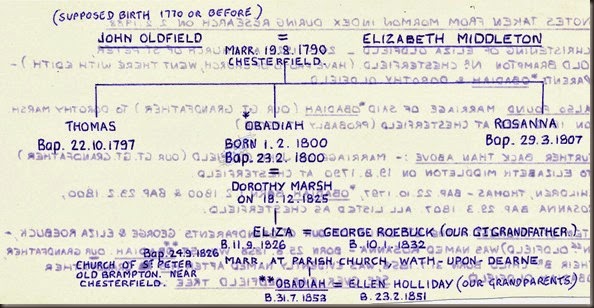
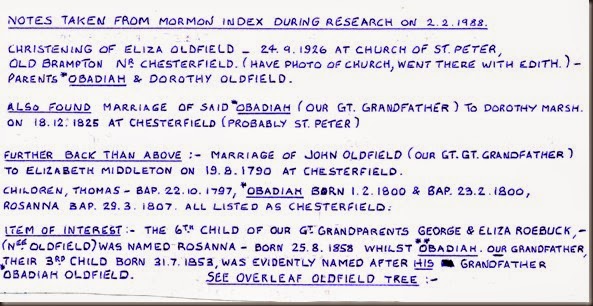 Have you spotted it already? When we looked a bit harder we were gob smacked! Not only was Chesterfield plastered across them, but Old Brampton jumped out of the page.
Have you spotted it already? When we looked a bit harder we were gob smacked! Not only was Chesterfield plastered across them, but Old Brampton jumped out of the page. I was greatly interested to read again about the origin of Obadiah Roebuck’s name and yes….the methodist connections which play nicely on the recent and continuing series of posts about methodism and our ancestor, the Reverend Thomas Holliday.
I was greatly interested to read again about the origin of Obadiah Roebuck’s name and yes….the methodist connections which play nicely on the recent and continuing series of posts about methodism and our ancestor, the Reverend Thomas Holliday.
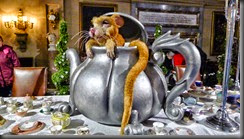
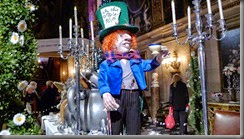
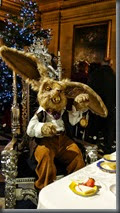
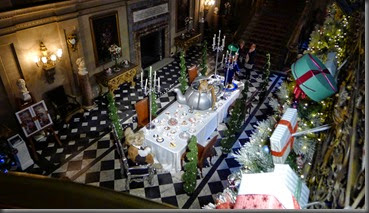

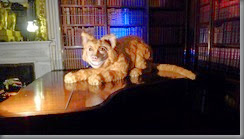
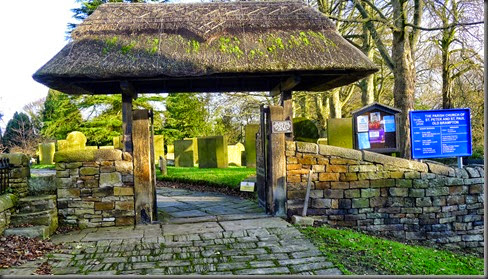
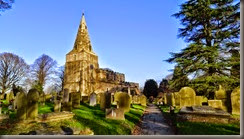

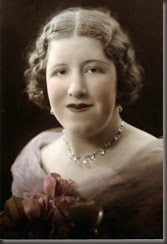
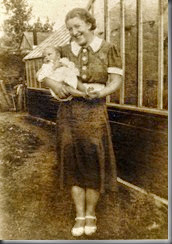
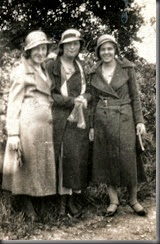





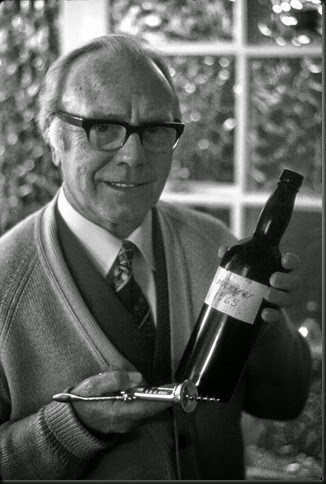






 Another website, this one referring to books you can obtain about the period and author ‘Trevor Harkin’ also refers to the stories of the victims by name, including our Violet.
Another website, this one referring to books you can obtain about the period and author ‘Trevor Harkin’ also refers to the stories of the victims by name, including our Violet.

